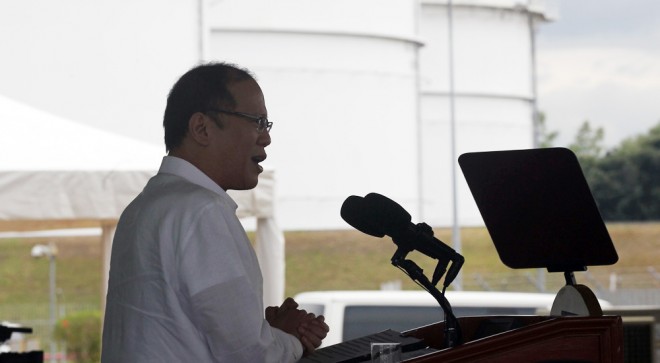New plant to boost supply of clean energy
The Philippine economy has been growing robustly in recent years mainly as a result of President Aquino’s transparency policies and the flood of cheap funds made available globally by the United States to revive its own economy.
For the Philippines to sustain this upward momentum, however, it has to have a stable supply of electricity, which is critical in attracting fresh local and foreign investment.
To this end, three companies—all leaders in their fields of expertise—have come together to develop a clean energy project that will help ease the country’s tight electricity supply.
From Malampaya platform
First Natgas Power Corp., a subsidiary of the Lopez-owned First Gen Corp., and Siemens broke ground earlier this year for a natural gas-fired, 414-megawatt (MW) power plant beside the Sta. Rita-San Lorenzo natural gas plants in Batangas City.
Article continues after this advertisementThe P28-billion project—to be built by Sta. Elena Construction and Development Corp.—will be finished in 2016, and will use natural gas from the Malampaya platform and eventually imported liquified natural gas.
Article continues after this advertisementThe Filipino-German partnership calls for the construction of two more gas-fired plants starting 2017 to bring the total new power output to more than 1,300 MW.
Surplus capacity
President Aquino thanked the consortium during the groundbreaking ceremonies “for their faith in our country and in our economy, which they have expressed not merely in words, but in [actual] investments.”
Mr. Aquino said it was expected that the Luzon grid’s energy demand would rise to about 11,000 MW by 2016 from the present demand of 10,294 MW.
Since power plants take two to three years to build, the government is laying the groundwork now for new plants, he said. The goal, he stressed, “is not simply to meet demand, but to surpass it.”
Mr. Aquino emphasized that demand for natural gas is growing, with its share in the country’s total primary energy supply expected to grow from 8 percent to 14 percent between now and 2030.
Clean energy
Natural gas-powered generators emit only half as much carbon compared to coal-powered plants, resulting in cleaner energy that fulfills the country’s commitment to mitigate the effects of climate change.
Named San Gabriel, the new power plant will also use Siemen’s state-of-the-art sea water cooling structures, designed to provide safe, highly reliable, efficient and low-cost electricity.
Mr. Aquino said that while the plan to guarantee sufficient energy for the country “may just be a single item in the catalog of things to be done in the grand and collective task of nation-building,” projects such as San Gabriel are fitting symbols of the country’s economic success.
Local partner
Siemens and First Gen contracted Sta. Elena Construction and Development Corp. to build the entire power plant, including the cooling towers, citing its expertise and track record in delivering projects despite tight deadlines.
“Sta. Elena’s expertise in delivering major infrastructure projects and their unblemished track record made the consortium confident that we were making the right choice in a local partner who could deliver the project up to specifications and in a timely fashion,” Siemens Philippines president and CEO Jacky Chan said.
The Lopez group currently generates 1,500 MW of electricity from its Sta. Rita and San Lorenzo plants. With the new plant, it will increase its output to more than 2,800 MW.
End to power outages
“Without new power supply, consumers in the Luzon grid will suffer from rotating brownouts and or pay for running more costly and less efficient oil-fired plants,” First Gen president Francis Giles Puno said.
“The shortage will also disrupt the country’s positive growth momentum and hamper the government’s efforts to create more jobs,” he added.
The new plant, which will start commercial operation in 2016, will augment the power supply on the Luzon grid.
First Gen chair Federico Lopez said the San Gabriel plant was the first of three additional power generators planned for the site.
“Our vision is to build an additional 1,342 MW between now and 2019,” he said. “Adding more capacity like San Gabriel will lessen our dependence on expensive oil-fired peaking plants and have the effect of taming opportunistic behavior that can ensue from tight supply conditions.”
Other investors
The rising demand for electricity is drawing other conglomerates to invest in power generation.
Ayala Corp. has said it wants to complete a 405-MW coal-fired power plant in Lanao del Norte by 2018 to help reduce the supply deficit in Mindanao.
The construction of the power plant, whose capacity could be expanded to 540 MW, is expected to start by the second half of this year after the conglomerate completes financial closing and obtains permits.
$1.5M-$2M for 1 MW
As a rule of thumb, it costs anywhere from $1.5 million to $2 million to build one MW of generating capacity, suggesting a total minimum investment of about $600 million for the Ayala group.
The conglomerate has tapped GNPower Ltd. and Quezon Power as partners for the development of the project, located in Kauswagan town in Lanao del Norte province.
